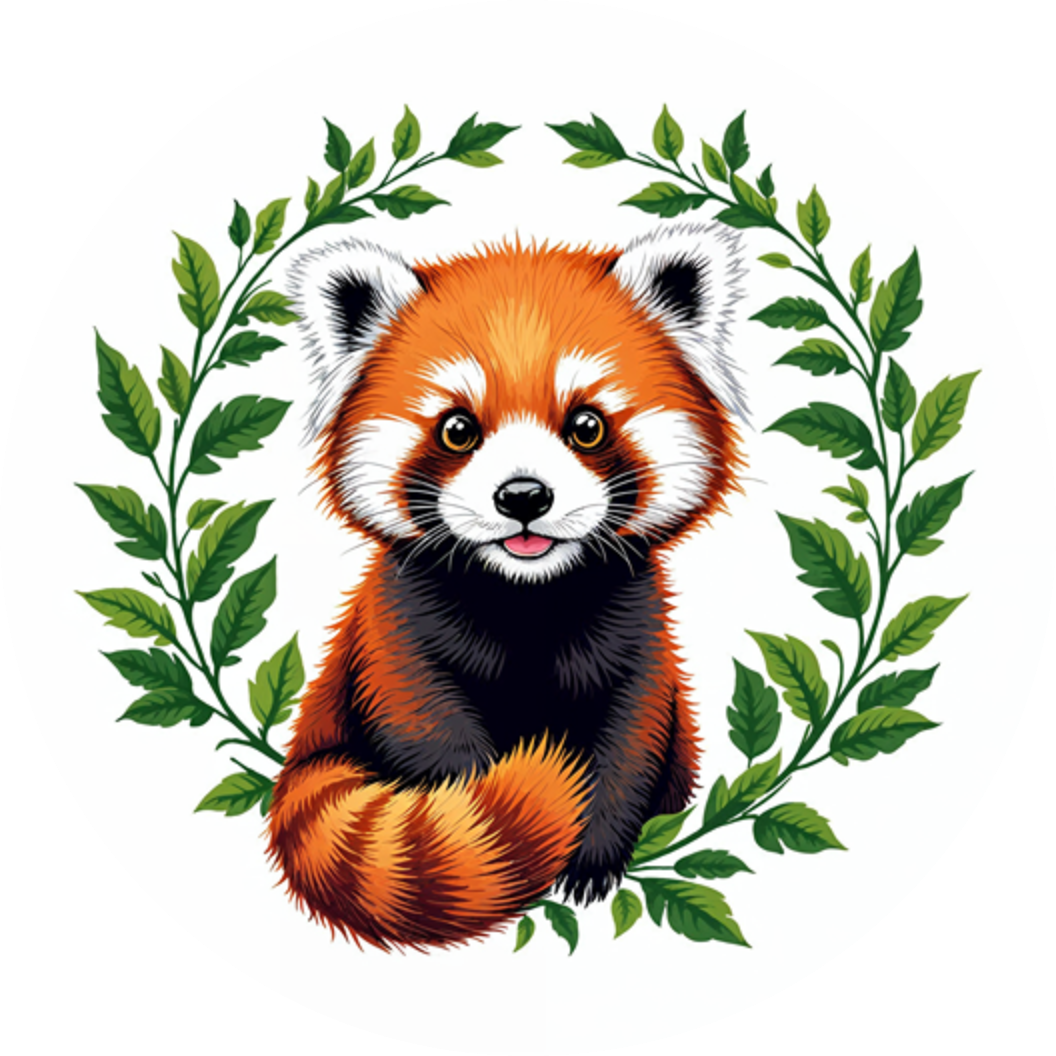A sustainable home represents far more than an architectural trend or a collection of eco-friendly features. It’s a living space thoughtfully designed to minimize environmental impact while maximizing comfort, health, and long-term efficiency for the people who inhabit it. As climate concerns intensify and resource scarcity becomes increasingly urgent, understanding what makes a home truly sustainable has never been more important for everyday homeowners around the globe.
I’m Katrina, and I’ve spent years exploring how our daily living spaces can become powerful tools in addressing environmental challenges. Welcome to this comprehensive guide on sustainable homes. Whether you’re building from scratch, renovating an existing property, or simply looking to make your current space more eco-conscious, the insights ahead will help you understand the principles, practices, and possibilities that define sustainable living at home. Let’s discover together how small changes and thoughtful choices can transform your house into a healthier home for you and the planet.
Understanding the Foundation: What Defines a Sustainable Home
Environmental Impact Reduction: At its core, a sustainable home operates on the principle of doing more with less. Buildings globally are responsible for 39% of energy-related carbon emissions, making residential spaces a critical battleground in the fight against climate change. A sustainable home actively reduces this footprint through intelligent design and material choices.
Energy Efficiency as Priority: These homes prioritize energy conservation through multiple strategies. Proper insulation can reduce heating and cooling costs by 45% or more compared to uninsulated structures. When combined with passive design techniques that harness natural heating, cooling, and lighting, sustainable homes dramatically decrease reliance on fossil fuel-based energy systems.
Water Conservation Integration: Beyond energy, sustainable homes address water usage through efficient fixtures, rainwater harvesting systems, and greywater recycling. Low-flow fixtures and water-efficient products can reduce water consumption by 20-60%, providing both environmental benefits and significant cost savings for homeowners.
Material Selection Matters: The choice of building materials fundamentally shapes a home’s sustainability profile. Sustainable homes utilize recycled, renewable, or locally-sourced materials with low embodied carbon. These choices extend to every element, from structural components to finishes and furnishings.
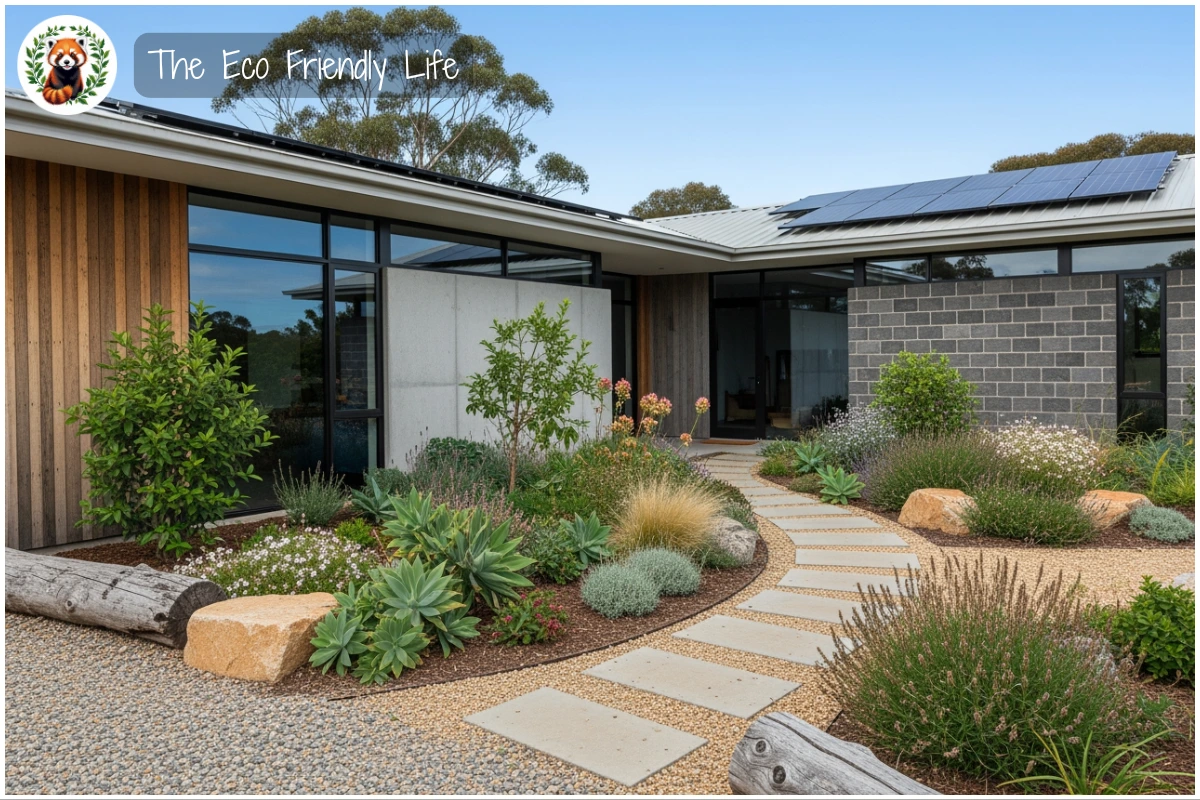
Understanding these core principles sets the foundation for exploring how sustainable homes work with natural systems to create comfortable living environments with minimal energy input.
Passive Design: Working With Nature, Not Against It
Climate-Responsive Orientation: Sustainable homes begin with thoughtful positioning on their sites. Proper orientation maximizes natural light and solar gain during winter while minimizing heat exposure in summer. Strategic window placement captures valuable seasonal sun, reducing heating demands without consuming any energy.
Thermal Mass Utilization: Materials like concrete, brick, and stone absorb heat during the day and release it slowly at night, naturally moderating indoor temperatures. This ancient principle, applied with modern understanding, creates comfortable living spaces that require minimal mechanical heating or cooling intervention.
Natural Ventilation Systems: Cross-ventilation design allows fresh air to flow through homes naturally, eliminating the need for energy-intensive air conditioning during moderate weather. Strategic window placement, operable skylights, and thoughtfully designed floor plans create air movement that maintains comfort while preserving energy.
Shading and Glazing Solutions: Overhangs, awnings, and deciduous trees provide summer shade while allowing winter sun penetration. High-performance windows with proper glazing prevent heat transfer, keeping warmth inside during cold months and outside during hot periods.
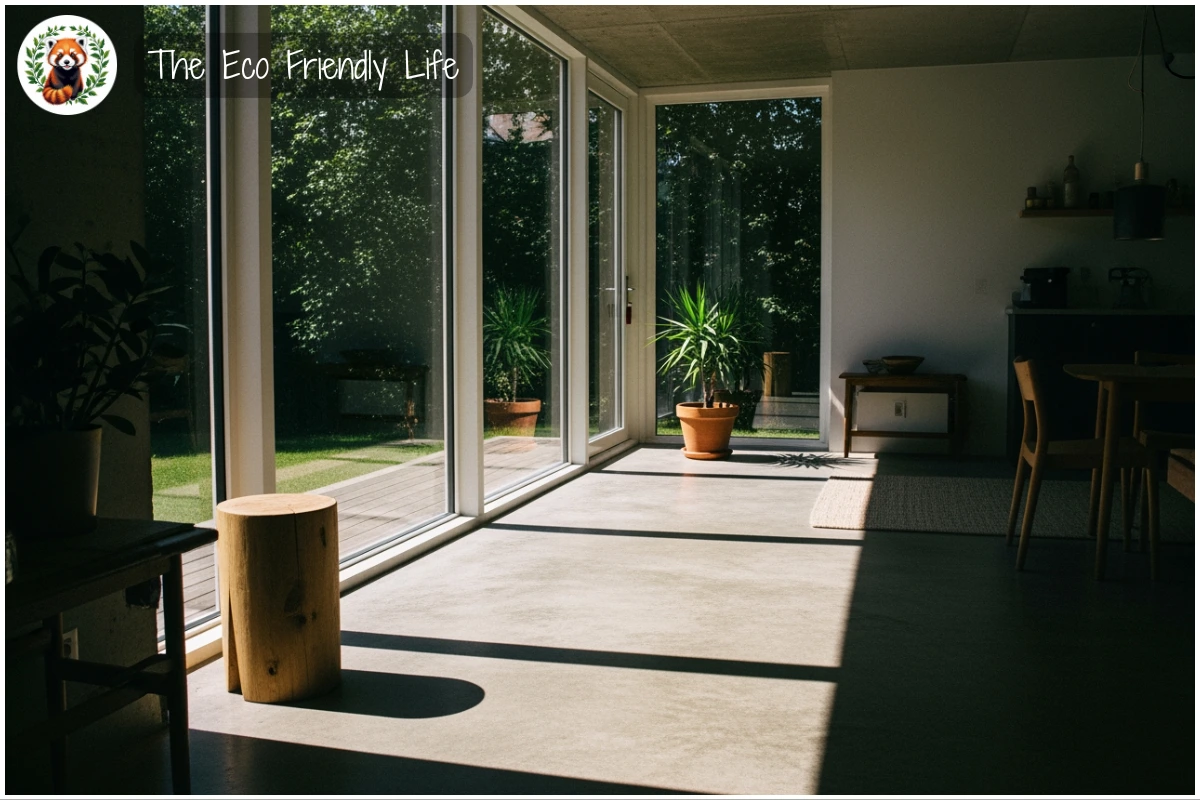
These passive design strategies work seamlessly with active renewable energy systems to further reduce a home’s environmental footprint and operational costs.
Energy Systems: Powering Homes Sustainably
Solar Energy Revolution: Rooftop solar panels have become increasingly accessible for homeowners worldwide. Residential LEDs use at least 75% less energy than incandescent lighting, while solar installations can enable household savings of up to $1,500 annually on energy bills according to Australian data. The technology has matured to where payback periods typically range from 4-7 years, after which the savings become pure financial gain.
Insulation Excellence: Perhaps the most cost-effective energy upgrade available, proper insulation creates an envelope that maintains desired temperatures year-round. Modern sustainable homes incorporate insulation in ceilings, walls, and floors, ensuring optimal thermal performance appropriate to local climate conditions.
LED Lighting Efficiency: Transitioning to LED lighting represents one of the simplest yet most impactful changes homeowners can make. These bulbs last up to 25 times longer than traditional incandescent bulbs, dramatically reducing both energy consumption and replacement costs.
Smart Systems Integration: Modern sustainable homes increasingly incorporate smart thermostats, automated lighting controls, and energy monitoring systems. These technologies optimize energy use by learning household patterns and adjusting systems accordingly, ensuring no energy is wasted when spaces are unoccupied.
As you consider these material choices for your sustainable home, you might be wondering how to deepen your knowledge and engage your whole family in sustainable living. The good news is there are excellent resources available to support you on this journey.
Retailers That Support the Planet – Our Product Recommendations
Building knowledge about sustainable living is just as important as the physical changes you make to your home. Whether you’re ready to dive deep into sustainability education or looking to inspire the next generation, these retailers offer valuable resources that support your sustainable home journey.
Our Retailer Recommendation for Adults
Coursera – Learn Sustainability From Leading Experts
Coursera offers a comprehensive range of sustainability and environmental courses taught by universities and industry experts worldwide. Their flagship Introduction to Sustainability course from the University of Illinois has enrolled over 169,000 students, covering everything from ecosystem management to energy systems and water resource management. The course explores key knowledge areas including population dynamics, global change, sustainable agriculture, environmental economics, and policy—all essential foundations for understanding how to create and maintain sustainable homes. With flexible learning schedules and the ability to audit courses for free, Coursera provides accessible education that empowers you to understand the science behind sustainable living and make evidence-based decisions about your home improvements.
Our Retailer Recommendation for Kids/Families
Green Kid Crafts – Inspiring Young Environmental Leaders
Green Kid Crafts takes a different but equally important approach—educating the next generation about sustainability through hands-on STEAM activities. Founded by environmental scientist Penny Bauder, this award-winning subscription service delivers monthly boxes containing 4-6 eco-friendly craft and science projects designed around themes like Climate Change, Green Energy, and Ecosystem Science. Each box includes a 12-page magazine with additional activities and online extras, making environmental education engaging and accessible for children ages 3-10. As a carbon-neutral company that plants one tree for every order, Green Kid Crafts demonstrates sustainable business practices while inspiring families to embrace environmental stewardship at home, creating a lasting impact that extends across generations.
These educational resources complement the physical changes you make to your home by building knowledge and fostering a culture of sustainability. With this foundation in place, let’s explore the practical strategies that bring water conservation and resource efficiency into your daily routine.
Water Management: Every Drop Counts
Efficient Fixture Installation: Modern water-efficient fixtures represent one of the most impactful upgrades homeowners can make. Low-flow showerheads use as little as 7-9 liters per minute compared to traditional fixtures that consume 15-25 liters, while dual-flush toilets allow users to select appropriate water volumes for different waste types.
Rainwater Harvesting Benefits: Installing rainwater collection systems provides an alternative water source for toilets, washing machines, and garden irrigation. Most Australian homes can collect 600-900 liters per square meter of roof annually, potentially reducing mains water usage by 40-60%, significantly lowering utility bills.
Greywater System Implementation: Sustainable homes often incorporate greywater recycling, which captures water from sinks, showers, and washing machines for reuse in garden irrigation. This closed-loop approach maximizes water utility while reducing overall consumption and wastewater production.
Landscape Water Wisdom: Sustainable landscaping complements indoor conservation efforts. Native plant selection, drip irrigation systems, and mulching reduce outdoor water needs by up to 50% compared to traditional lawns and gardens, creating beautiful spaces that work with local climate conditions rather than against them.
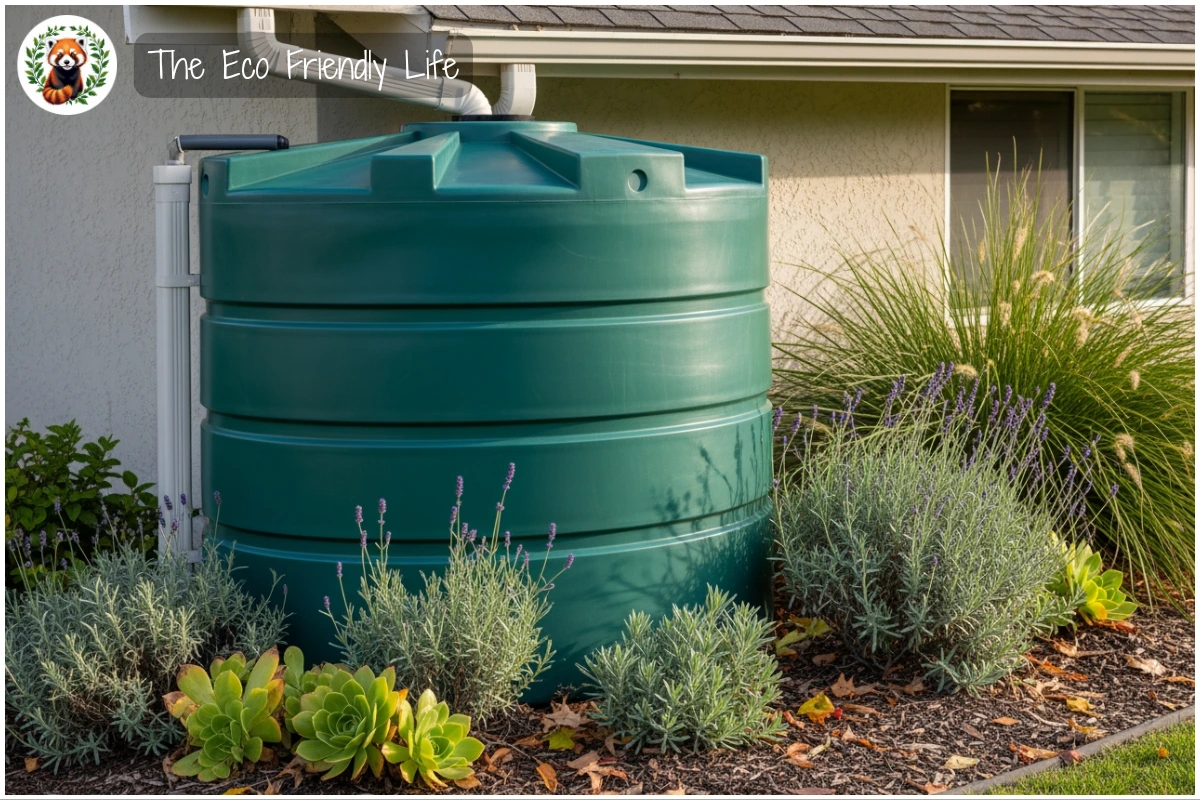
Beyond water and energy conservation, implementing simple daily actions can create immediate environmental impact while building momentum toward larger sustainability goals.
Practical Daily Tips You Can Action Today
Transforming your home into a sustainable space doesn’t require massive renovations or significant investments. These practical actions can be implemented immediately, creating positive environmental impact while often reducing household expenses.
| Sustainable Action | How to Implement | Impact & Benefits |
|---|---|---|
| Switch to LED bulbs throughout your home | Replace incandescent bulbs room-by-room as they burn out with LED alternatives | Reduces energy consumption by 75% and bulbs last 25 times longer, saving money and resources |
| Install low-flow showerheads and faucet aerators | Purchase inexpensive aerators from hardware stores and screw onto existing faucets | Cuts water usage by 20-60% without noticeable pressure reduction, lowering utility bills |
| Seal air leaks around doors and windows | Use weatherstripping and caulk to close gaps where air escapes | Prevents heating and cooling loss, reducing energy bills by up to 20% annually |
| Start composting food scraps | Set up a simple compost bin in your yard or use a countertop composter | Diverts waste from landfills, reduces methane emissions, and creates nutrient-rich soil |
| Unplug electronics when not in use | Use power strips to easily turn off multiple devices, or simply unplug chargers and appliances | Eliminates phantom energy draw that accounts for 5-10% of residential energy use |
| Replace HVAC filters regularly | Check and change filters every 1-3 months depending on usage and household factors | Improves system efficiency by 5-15%, extends equipment life, and enhances indoor air quality |
| Wash clothes in cold water | Simply adjust your washing machine settings to cold for most loads | Reduces energy use by up to 90% per load since heating water consumes most washing energy |
| Use natural light during daytime hours | Open curtains and blinds to maximize sunlight, arrange workspaces near windows | Eliminates unnecessary lighting use, saving electricity while improving mood and productivity |
| Install a programmable or smart thermostat | Purchase and install a thermostat that learns your schedule or can be controlled remotely | Optimizes heating and cooling, potentially saving 10-30% on energy costs with automated efficiency |
| Choose reusable products over disposables | Replace paper towels with cloth, plastic bags with reusable bags, and disposable bottles with refillable containers | Reduces waste production by hundreds of pounds annually and saves money on repeated purchases |
These straightforward actions demonstrate that sustainable living is both achievable and beneficial for everyday households. Let’s address some common questions about sustainable homes.
FAQs
What’s the most cost-effective sustainability upgrade? Insulation typically provides the best return on investment, reducing heating and cooling costs by 40-50% with payback periods of 5-6 years. It’s often the first upgrade sustainability experts recommend.
Can renters create sustainable homes? Absolutely. Renters can implement many sustainability measures including LED bulbs, water-efficient showerheads, power strips, composting, and sustainable purchasing choices without permanent modifications.
Do sustainable homes cost more to build? Initial construction costs may be 5-10% higher, but lifecycle costs are significantly lower due to reduced utility bills, minimal maintenance, and increased durability. Most sustainable features pay for themselves within 5-10 years.
How do sustainable homes affect property value? Studies show green-rated homes sell at premiums of up to 18% compared to conventional properties, with faster sale times and higher occupancy rates attracting buyers who value efficiency and health.
Organizations to Support – Our Recommendations
- World Green Building Council – This global network transforms the building and construction sector across climate action, health, equity, and resources. Through their network of over 75 Green Building Councils covering more than 60% of global building stock, they develop frameworks and certifications that guide sustainable construction worldwide. Support their mission toward sustainable buildings for everyone through WorldGBC where you can learn about their programs, connect with your local Green Building Council, and contribute to transforming the built environment.
- Architecture 2030 – Dedicated to rapidly transforming the built environment from the major contributor of greenhouse gas emissions to a central solution to climate change. Their 2030 Challenge calls for all new buildings to be carbon-neutral by 2030, influencing design practice and policy globally. Support their transformational work through donations that accelerate the global shift toward zero-carbon buildings while empowering design leadership to create measurable climate progress across disciplines and regions.
- International Living Future Institute – Through programs like the Living Building Challenge, this organization envisions socially just, culturally rich, and ecologically restorative environments. With over 800 projects certified or registered representing 55+ million square feet, their rigorous certification standards demonstrate what’s truly possible in regenerative design. Learn about their programs and become part of the community building a future worth living in through membership or participation in their certification initiatives.
These organizations provide education, tools, and frameworks that make sustainable building achievable for professionals and homeowners worldwide.
Resources and Further Reading
- Your Home – Australia’s Guide to Environmentally Sustainable Homes – This comprehensive government resource offers climate-specific design guidance for sustainable homes across different climate zones. Access free architecturally designed house plans and detailed sustainability principles at Your Home that help you build or renovate with energy efficiency and comfort as priorities, with sections covering passive design, insulation, and water management.
- IPCC Sixth Assessment Report: Buildings Chapter – The definitive scientific assessment on buildings’ contribution to global emissions and mitigation strategies. This comprehensive IPCC AR6 Chapter 9 provides data-driven insights showing buildings reached 21% of global GHG emissions in 2019 and presents pathways to dramatically reduce that impact through proven technologies, policies, and the SER framework for sufficiency, efficiency, and renewables.
- Passive House Institute Requirements – For those interested in the highest standard of energy-efficient building design, the Passive House criteria provide specific technical requirements including heating demand not exceeding 15 kWh per square meter annually, airtightness of 0.6 air changes per hour, and renewable primary energy demand limits that create ultra-efficient, comfortable homes.
These resources provide scientific foundations and practical guidance for anyone committed to understanding and implementing sustainable home principles.
Our Related Articles
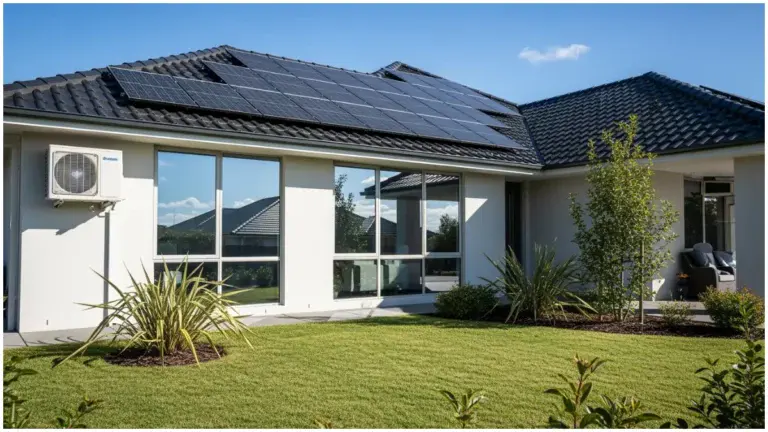
How To Make Your Home Energy-Efficient
Rising energy costs and growing environmental concerns are driving more people than ever to rethink how they power their homes. The good news? Making your…
Read More
Renewable And Non-Renewable Energy Sources Explained
Energy powers every aspect of modern life, from the lights in our homes to the vehicles we drive and the industries that create the products…
Read MoreConclusion
Creating a sustainable home represents one of the most impactful personal contributions you can make toward addressing climate change while simultaneously improving your health, comfort, and financial well-being. From passive design principles that work with nature to renewable energy systems that power your daily life, from water conservation strategies to mindful material choices, every element of sustainable home design offers tangible benefits for both people and planet.
The journey toward sustainability doesn’t require perfection—it requires progress. Whether you implement one tip from this guide or undertake a comprehensive home transformation, each step moves us collectively toward a more sustainable future. Remember that buildings currently account for 39% of energy-related global emissions, meaning your home choices genuinely matter in the bigger picture.
As you consider your own living space, what aspects of sustainability resonate most strongly with your values and circumstances? Which changes feel most achievable for your situation right now? Share your thoughts, experiences, and questions in the comments below—your insights might inspire others to take their own first steps toward sustainable living.

